Here at Food52, we love recipes -- but do we always use them? Of course not. Because once you realize you don't always need a recipe, you'll make your favorite dishes a lot more often.
Today: How to make minestrone soup anytime, with ingredients you have handy -- a tutorial from Alicia Sokol of Weekly Greens.
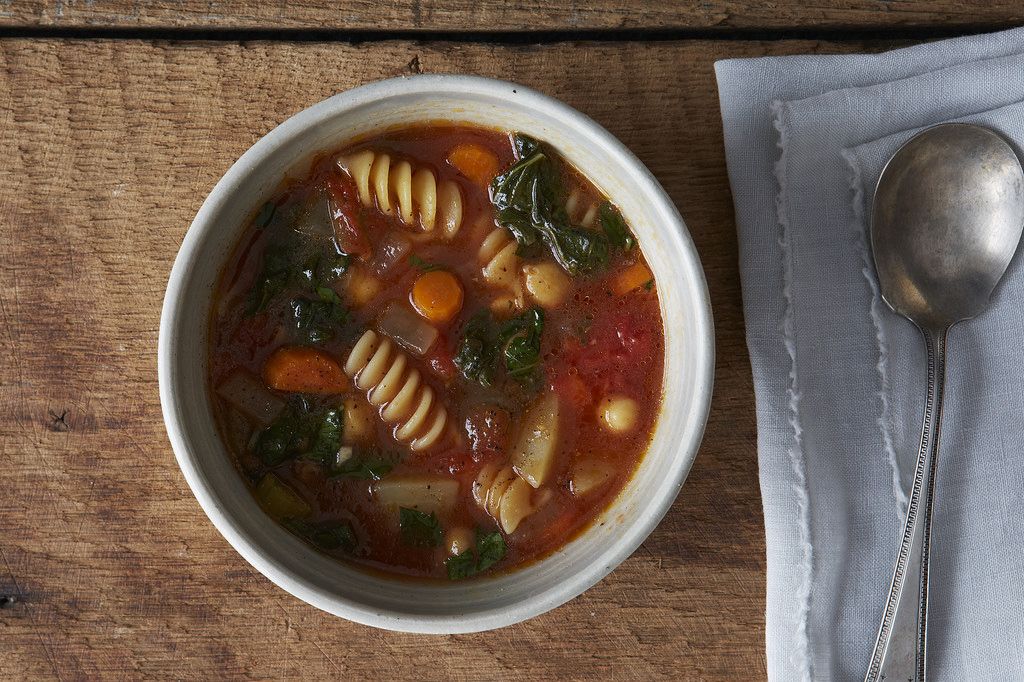
Around the time I replace shorts with fall fleeces, the pantry begins to take on a fullness suggesting the threat of war or acts of God. Though I live in a hurricane zone, I am not exactly battening down the hatches, nor do I lose sleep over the possibility of imminent attack. No, no. The rows of beans in varied shapes and sizes and the collection of pastas and grains line my shelves in anticipation of six chilly months of mad soup-making. You can bet your down vest that on any given Monday, post-daylight time, there is a hot and bubbly vat of deliciousness I'm calling dinner. It's never quite the same twice. Minestrone has become a pleasing default -- endlessly forgiving, meatless for Monday, something for everyone (pasta for the kids, vegetables for mom and dad) and it meets the all-important one-pot criteria. Check, check, and check.
Variety is the ticket here. Luckily for you, fall produce makes it easy to change up your game each and every time. Squashes of all shapes and colors, leafy greens, the last of the summer squash and basil -- go to town. As root vegetables take over into winter, your options get even more varied. Whip up a green salad (no recipe needed for that either), serve with warm bread, and shamelessly repeat weekly.
Here's how to make minestrone, with whatever ingredients you have on hand:
1. Clean out your crisper drawer. Chunky vegetables are the backbone of any hearty minestrone. At a minimum, you will need an onion, a few carrots, a couple stalks of celery, and a clove or two of fresh garlic. Leeks also add depth to your base (see how to clean them here). From here, any seasonal vegetable is fair game -- red or yellow bell peppers, zucchini, yellow squash, mushrooms, whatever else lurks in your fridge. Pick one starchy vegetable, like sweet potato, Yukon gold potato, or butternut squash as well.
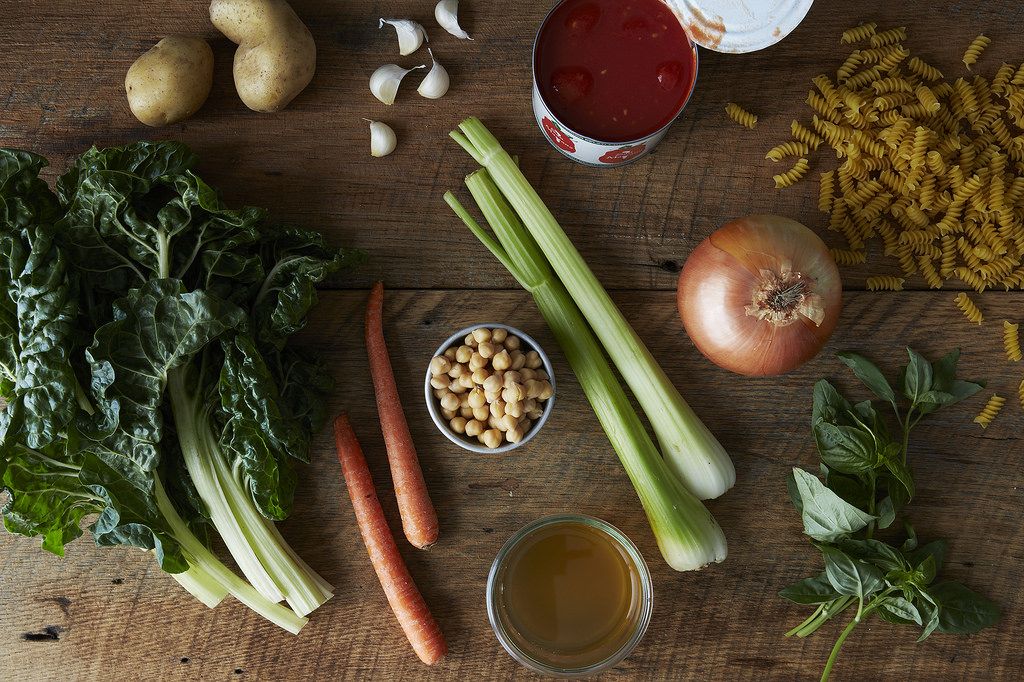
2. Rifle through your pantry. My best minestrone combinations begin with a good, old-fashioned pantry raid. You are looking for a few key components: a short pasta (8 to 12 ounces, depending on how carby you like your minestrone), a can of beans, and a large (28-ounce) can of tomatoes. Dried pastas, such as rotini, farfalle, or orecchiette, work well here, but consider fresh cheese- or meat-stuffed pasta, like mini ravioli, for a decadent twist. I keep a can of garbanzo beans (chickpeas) or a white bean variety, such as cannellini or navy, on hand for this very purpose. Tomatoes can be whole peeled plum, which you will break up with the back of a wooden spoon or crush with (clean) hands. You can also use diced or crushed if you prefer a smoother tomato base rather than big chunks.
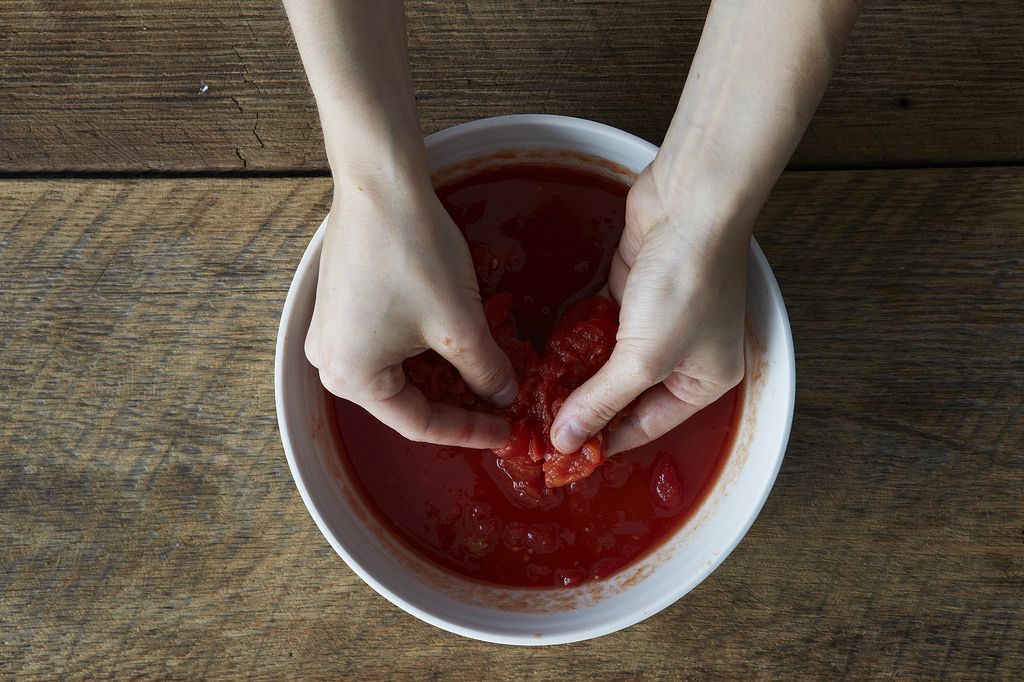
3. Chop, chop, chop, and chop. Begin by chopping the onion, carrots, and celery into a uniform small dice. Smash the garlic with the back of your knife, then roughly chop it and add it to the pile of vegetables. You will chop the rest of the vegetables while cooking your allium base.

4. Heat a few glugs of olive oil in a large, heavy-bottomed pot over medium heat. Toss in the onions, carrots, celery, and garlic (and leek, if you're using it) with a generous pinch of salt. While the onion mixture softens and becomes aromatic, continue chopping your remaining crisper drawer loot into uniform pieces. Once the onion mixture is soft and translucent, about 10 minutes, toss the remaining vegetables into the pot and stir for a minute or two. You may need to add another small glug of oil to coat the vegetables.
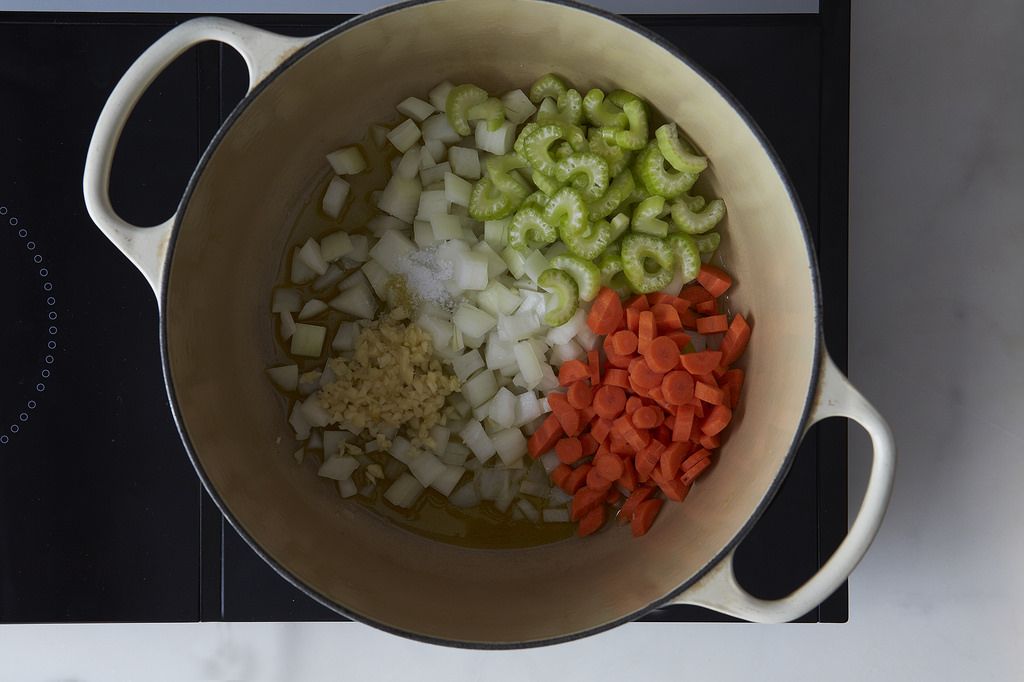
5. Add liquid and bring to a boil. Add the can of tomatoes (with its juice), a couple cups of vegetable or chicken stock, and the drained beans, and bring to a boil. Reduce to a simmer and cook uncovered until the hardiest vegetables (think potato or butternut squash) are just tender. This can take anywhere from 20 to 40 minutes, depending on what vegetables you use and how finely you’ve chopped them. Check in at about 20 minutes, then toss in the pasta for the last several minutes of cooking (according to package directions).
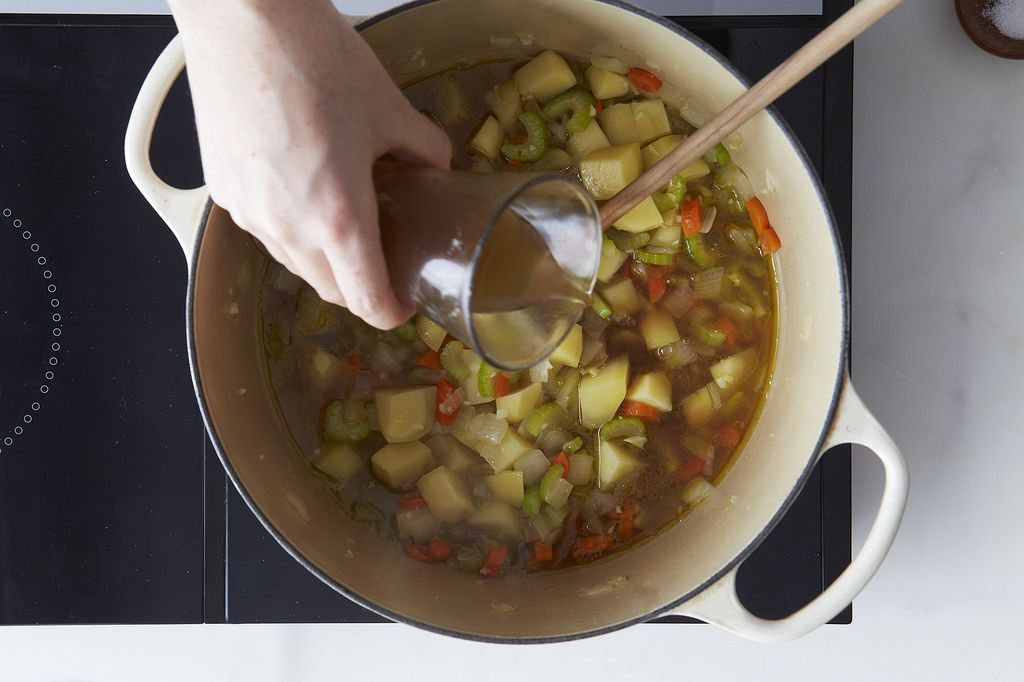
6. Go green (or go home). Add a bit of green for a burst of color and nutrients. Finely chopped kale, spinach, or Swiss chard work beautifully. Add them when the pasta is barely al dente -- they need only a minute or two to wilt. A fistful of chopped flat-leaf parsley or fresh basil leaves are also a nice touch. Taste for seasoning and adjust as needed.
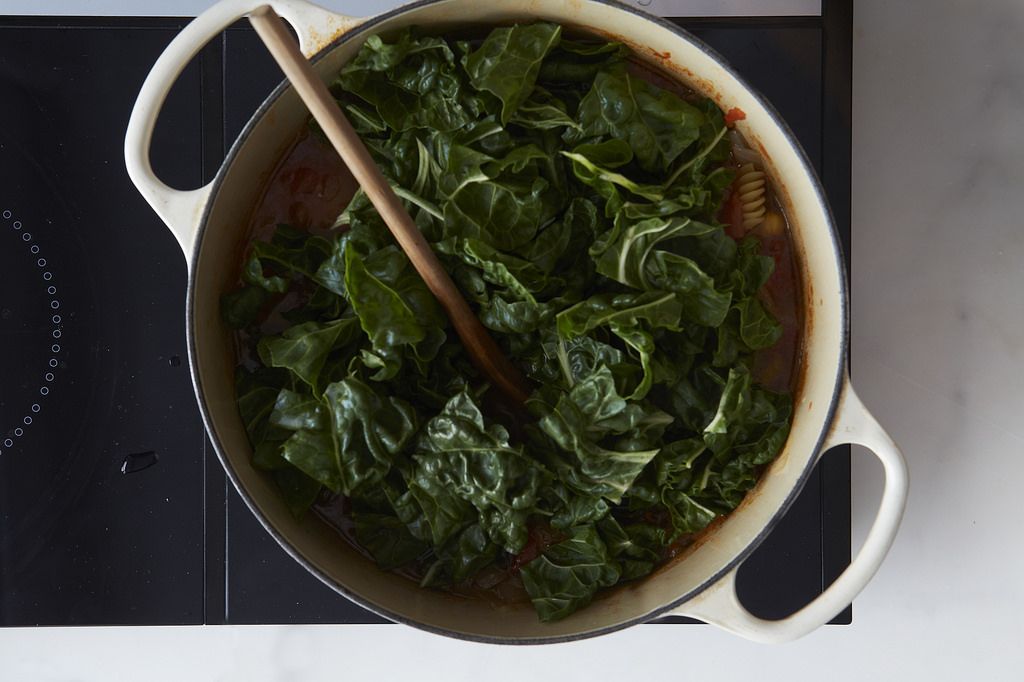
7. Dig in. Finish off your one-pot meal with fanfare -- a downy pile of freshly grated Parmesan, a drizzle of good balsamic vinegar (the nice stuff!), or a spoonful of pesto or olive tapenade or a final splash of olive oil take it from vegetable soup to where-have-you-been-all-my-life.
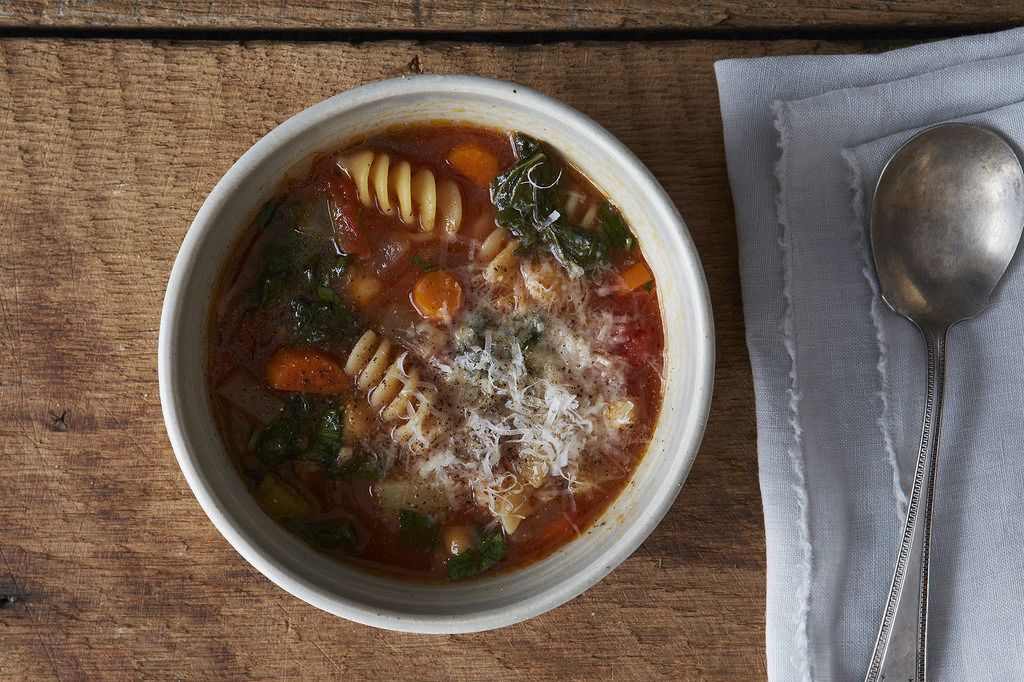
More Options:
Smoky: Before adding the onion mixture to the warm oil, add a couple strips of finely chopped bacon. Cook until brown and crispy, then add the onion mixture and proceed. If you’d like a smoky vegetarian option, add a couple teaspoons of pimentón de la vera (Spanish smoked paprika) to the onion mixture just before adding the rest of the vegetables. Stir it around and let it get fragrant before proceeding.
Herby: In the early fall, I’m scrambling to clip the last of my overgrown herbs before the first hard freeze. Sometimes I bundle together a few sprigs of thyme, rosemary, parsley, and whatever else needs cutting for a bouquet garni (a fancy way of saying a bundle of herbs tied together with kitchen twine). Add a dried or fresh bay leaf and drop the whole bundle in with the tomatoes and stock. Remove and discard before serving.
Vegan: Use vegetable stock and dried pasta, and skip the Parmesan and pesto. Consider sprinkling with nutritional yeast or topping with a dollop of Gena Hamshaw's delicious vegan pesto.
We're looking for contributors! Email [email protected] and tell us the dish you could make in your sleep, without a recipe. Check out what we've already covered.
Photos by Alpha Smoot










See what other Food52 readers are saying.